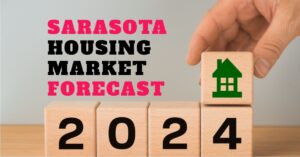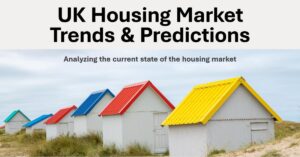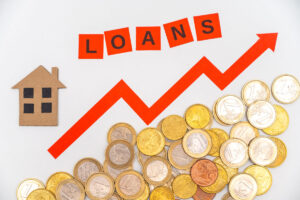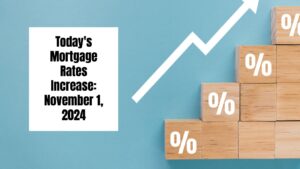You'll often hear people say that they don't like real estate because if you look at the long-term returns of the stock market, it seems to have a better return over the long-term. Of course, when they say this, they are leaving a few key things out.
First, when people say the stock market, what they really mean is something like the S&P 500 or the Dow Jones Industrial Average. These are not the stock market. Rather, they are indexes filled with some of the leading companies in the US. You'll often hear that the stock marketing returns anywhere from 7%-10% annually. This is really based on index returns rather than the market itself.
Second, while 7%-10% is a good return annually for the average person, it is not a good return for a professional investor. And when people stack up the returns from real estate against the stock market, they often only factor in one profit center in real estate, appreciation.
The reality is that there are four ways you can make money with real estate that, when added up together, make for considerably higher returns than the stock market. These profit centers are the reason that real estate is one of my favorite investment vehicles.
A word of clarification: as you read about these profit centers, realize that I'm talking about investment real estate-that is property bough specifically to be run like a business-rather than your personal residence. As I've said before, your house is not an asset. It takes money out of your pocket. But your investment real estate is, if you invest properly, because it puts money in your pocket.
Now, here are the four profit centers of real estate.
4 Profit Centers That Make Real Estate The Most Powerful Investment
1. Cash flow on operations
If you're holding real estate as an investment, you will have tenants. Each month they will pay you rent. Let's say that you own a rental house and get $1,000 per month in rent. Over a year, that is $12,000 in income.
Now, you subtract out your expenses, which include things like your taxes, insurance, your property management, vacancies, turnover expense, allowances for repairs, etc. (This doesn't include your debt-more on that later).
For purposes of this example, let's assume that your monthly average expenses are $100 a month. Your cash flow on operations then would be $900 per month. That is what is referred to as your Net Operating Income (NOI).
Out of your NOI you pay your debt service. Let's assume for this example that you have a $200,000 property with an $180,000 loan at today's rate of 3.7%. That's a debt payment of about $830 a month.
So, that would be rental income of $1,000 minus $100 in operating expenses minus $830 in debt service, equaling $70 in cash flow. That times 12 equals $840 in cash flow per year. That $840 divided by your $20,000 equity stake would equal a 4.2% cash-on-cash return.
But that's not the end of your return story. Let's move on to the next profit center.
2. Amortization
Amortization is the concept of paying down your debt service. Each month, when you make your debt payment (or rather your tenant makes your debt payment) out of your NOI, a portion of that goes towards paying down your principle on the loan. When you hear somebody talk about a 30-year fixed fully amortized loan, it means that when you make all 360 of those monthly payments at the end, the loan is 100% paid off.
Because your tenant is paying rent, and that rent is covering the debt payment, the principle pay down included in that debt payment is actually profit for you. Let's take a look at how this plays out with our $180,000 loan from above.
In the first year of the loan, you'd be paying $6,604 in interest and $3,338 in principle. As the loan matures, the interest amount goes down each month and the principle amount goes up. But we'll use these numbers for now.
That $3,338 is profit to you. It's true equity in your property.
If we add this $3,338 to the $840 in operating income, we now have $4,178 in income for the year, a 20% return on our $20,000 invested into the property. Plus, your interest payment is often tax-deductible, so added bonus, but check with your tax advisor to be sure for your specific case.
Already, you're crushing average stock market returns and there are still two more profit centers to look at.
3. Depreciation
This is often referred to as a phantom return. The basic concept of depreciation is that your investment property is made up of tow parts, the land and the improvements on the land, i.e., your house.
Appraisers will assign percentage values to your property based on these two parts. For this example, 20% of the value is the land and 80% of the value is the improvement. Over time, the house will deteriorate, so the government in the US (check with your tax advisor to make sure you qualify), let's you write down that 80% value over a certain number of years depending on the type of real estate. For residential homes it's 27.5 years.
So, your $200,000 property has $160,000 that can be depreciated over 27.5 years, which equals $5,818 per year. This amount is listed as a loss of income, even though no money is coming out of your pocket. Now let's see why this is called phantom income.
Let's assume you are in a 30% tax bracket. That means that, applying 30% to your depreciation of $5,818, nets you $1,745 in annual tax savings.
Adding that $1,745 to our existing income of $4,178, we now have $5,923, a 29.6% return on your cash of $20,000.
Let's take a look at the last profit center, appreciation.
4. Appreciation
This is the frosting on your cake. I don't invest in real estate for appreciation. I'm a cash flow investor. But I do appreciate my appreciation.
Let's assume you have a conservative appreciation rate of 3% a year on average for you $200,000 property. That equals $6,000 per year in value added to your house.
Add that to your $5,923 and you have $11,923. That's a 59% return on your $20,000 capital investment in your $200,000 property. And that blows investing in the stock market for the long-term out of the water.
Increase your real estate IQ: These types of returns are achievable by anyone, as long as they understand how to find the right deal and run the numbers correctly. And it takes a high financial IQ.











